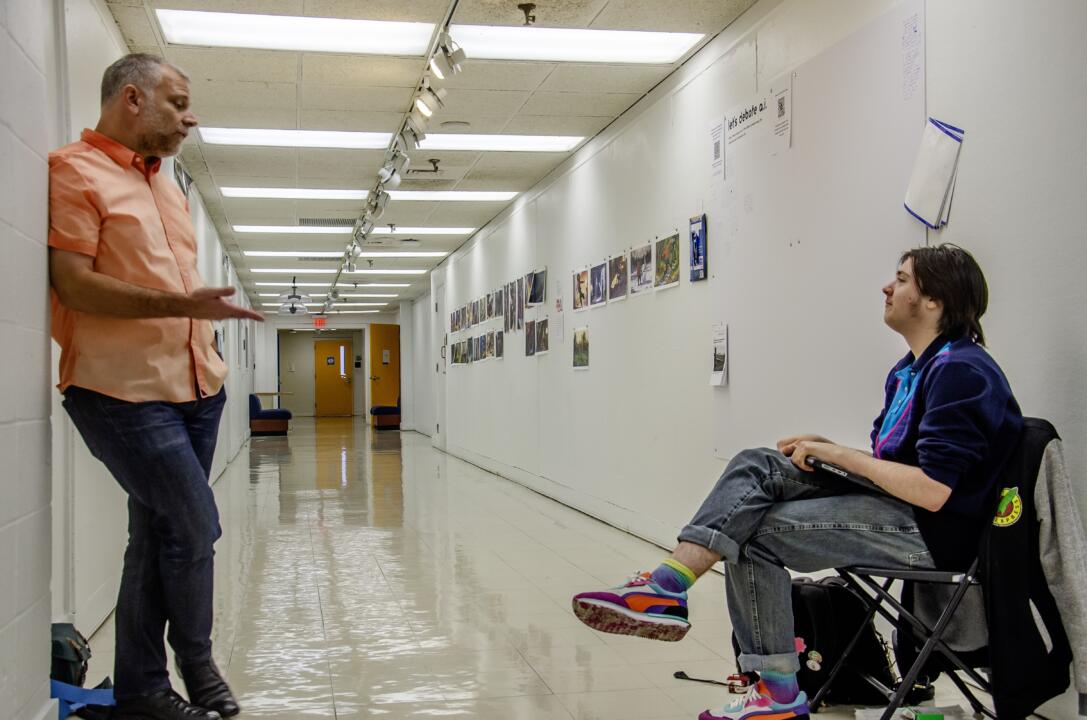UMBC’s new virtual reality lab has finally made its debut. The π² Immersive Hybrid Reality Lab, as it is officially called, opened its doors on Oct. 14 at the Information Technology/Engineering Building for the use of faculty and students, allowing for the exploration of multiple disciplines with almost 180 degrees of LCD screens.
Over 30 faculty members across the UMBC community contributed to the proposal to the National Science Foundation. The lab was funded by a $360,000 grant from the NSF, known as the Major Research Infrastructure Award. The receiving group of five professors was led mainly by Jian Chen, Ph.D., an assistant professor of electrical engineering and computer science at UMBC, who was also responsible for bringing the initial idea to Karl Steiner, Ph.D., vice president of research.
The lab is much more than a collection of screens, according to Steiner. It is a “highly interactive space that facilitates collaborations by allowing researchers and students to immerse themselves in very complex data,” he said. In short, it allows for researchers to visually interact with data in ways that have never been possible before.
The room, measuring about 15 by 20 feet, features an expansive curve of LCD screens, effectively creating an entirely virtual environment. Because of its body-centric computer to user interaction, users are able to fully interact with the environment by using 3D glasses (which have sensors attached to them) and operating handheld controls. This interaction allows for an immersive experience, in which the user can actively control the data by manipulating the space around them in six degrees of motion: up and down, left and right, forward and backward, (tilting) back and forth, swiveling and pivoting.
In an interview with WMAR Baltimore, Chen further explained how the lab can trick the user. While users may believe they are actively moving, they are actually quite still; the brain is simply tricked into thinking the body fully in motion in the virtual world, even though users remain mostly stationary. “There is some disorientation,” said Steiner in the same interview.
The π² Lab is yet another unique aspect of the UMBC technological community and according to Steiner, a cornerstone in the university’s growing and unique capability in 3D imaging and visualization. UMBC students and faculty are already able to scan large objects (or even people) at the 3D Scanning Lab and produce 3D objects in the maker lab, but now they can go further and explore virtual worlds in the Hybrid Reality Lab.
Designed to completely immerse the user in virtual reality, the lab can be utilized for research and beyond, breaching multiple areas of study such as neurobiology, biomedicine, engineering, physics, meteorology, astronomy, design and many more. While there are other immersive virtual reality labs out there, UMBC’s π² Lab is one of the most advanced in the entire Mid-Atlantic Region, allowing for much more complex data analysis and visualizations and incredible advancements in research across disciplines.


